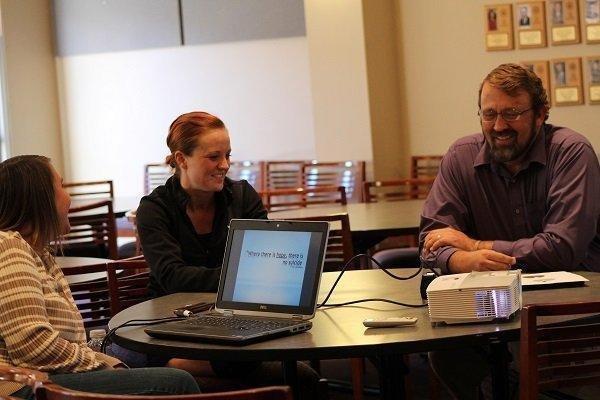Suicide statistics in the local area are currently at an all-time high. According to the national trend, rural areas the size of Carbon and Emery counties usually see about three to four suicides each year. USU Eastern Director of Student Counseling Darrin Brandt, LCSW indicated that so far in 2014, there has been 25 documented cases.
Brandt explained that this figure has been consistent for quite some time. “Numbers have been in the low 20s for the past three years,” he stated. “Causes could range from multi-generational poverty levels to the vast amount of drug abuse in our area, but several factors could contribute to the suicide problem.”
Although reasons are not clearly known, prevention is a tool that Brandt hopes to use to spread the message. On Tuesday, he conducted several suicide prevention training courses for USU Eastern students and the general public. During the brief course, Brandt highlighted the importance of recognizing a person who may be contemplating suicide and providing proper assistance through professional medical and mental health care.
Brandt used the comparison of a heart attack and the reaction this medical condition would receive. “If someone is clinching their chest, the first thing you do is call for help,” Brandt stated. “The same thing needs to happen if someone tells you they want to hurt themselves. This is a medical condition that has deadly implications if not treated quickly.”
Locally, those in need of help can turn to several different outlets including 911 or public safety dispatch, Castleview Hospital or any medical facility including a doctor’s office, Four Corners Mental Health and counselors including Brandt. “Once an individual admits they plan to harm themselves, get help immediately,” he cautioned. “By the time a person admits to this, they have already made their mind up.”
A recent poll conducted on the USU Eastern campus indicated that over 70% of 100 students surveyed admitted to knowing someone who has or attempted to commit suicide. Of that same number of students, over 30% admitted to contemplating suicide at one time.
There are many reasons why an individual may consider suicide, but for some, the downward spiral is strong and only professional medical treatment will prevent the deadly outcome. Without proper treatment, the numbers will continue to rise. “There is such a stigma attached to mental illness,” Brandt said. “Until society overcomes this, I don’t see this problem getting much better.”
Brandt also explained that most suicidal individuals don’t want to die, they just want to end the pain they are experiencing. However, through expert care, most suicidal individuals can overcome the pain and live a normal life after treatment.
Because suicide is the leading cause of death due to injury in the U.S. according to the American Journal of Public Health, it is important to step in and offer assistance to someone who may be thinking about suicide.
Brandt offered the following steps to prevent suicide:
- Ask. Have the courage to ask, “Are you thinking about hurting yourself?” Remain calm even if the answer is yes.
- Care. Remove any means that could be used for self-injury. Calmly control the situation. Don’t use force and actively listen.
- Escort. Avoid leaving a suicidal individual alone, but be alert to your own safety. Escort them to the proper medical or mental health provider or simply call 911.
By offering this simple training, Brandt feels that lives may possibly be saved. “Where there is hope, there is no suicide,” he concluded.


